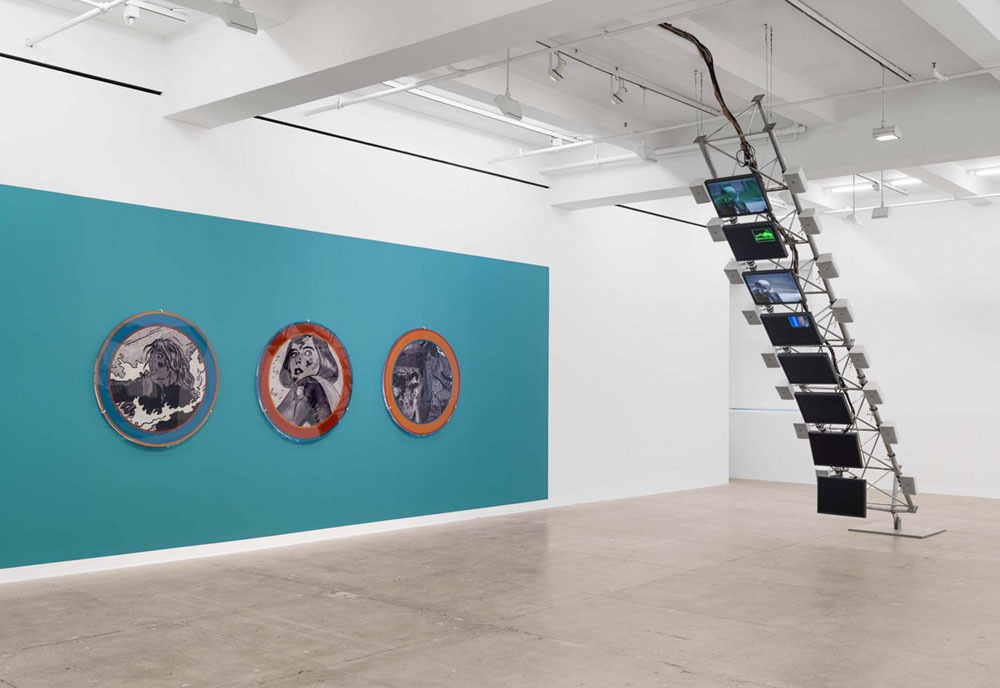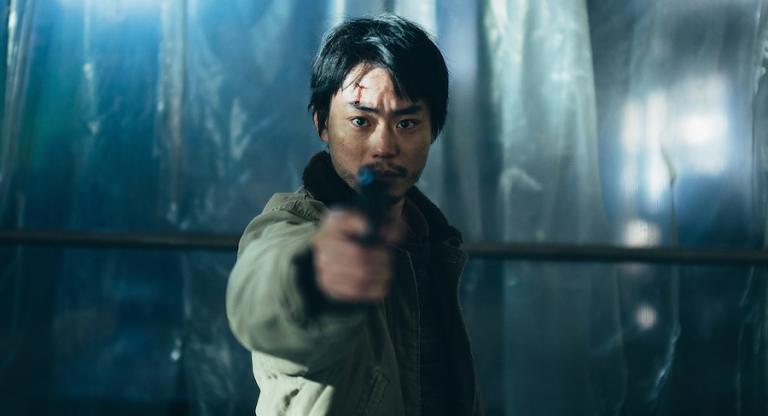At Marian Goodman Gallery, four of Dara Birnbaum’s works from the 1990s—grouped here under the name “Accountability”—form a multimedia screed on public address and dissent. The central multi-channel installation, Transmission Tower: Sentinel (1992), refashions a 20-foot tall steel broadcast tower into a tilting spinal cord-like armature to which video screens and stereo speakers are fixed. President George H. W. Bush’s campaign speech demagoguery and doggerel anti-war verses by Allen Ginsberg flash past each other from screen to screen, speaker to speaker. “I will keep America moving forward. Always forward. For a better America. For an endless, enduring dream and a thousand points of light,” Bush says. Fugitive sounds and images run on a 2-minute loop, yet the words are untrue every step of the way. The sound-bites are a reminder that political figures rarely face accountability for failing to realize their promises. Nor is there accountability for achieving what was never asked for.
“Whom bomb? / We bomb you! / Whom bomb? / You bomb you!” goes Ginsberg. His poetry speaks to a continued present of American bombs dropped on faraway lands without congressional approval and client states of the U.S.A. conducting ethnic cleansing with American munitions and financing. Green-on-black text by Birnbaum floats up from lower screens to higher ones, adding the artist’s silent voice into the fracas: “we recognize that the ideas / expressed here are general / and incomplete” and “you ignored fundamental criticism / and you made major mistakes.” I think to myself, “is this accountability?” Perhaps accountability is an illusion. International law seems to be.
Birnbaum’s tower is flanked by two printed works mounted on the wall: Quiet Disaster (1999) and Antenna/Fist (1992/2018). Both works riff on the expressive possibility of the paraliterary—comic book figures and protest signs are cropped, isolated, and transmuted into memetic fragments. In a nearby room, the single-channel video Canon: Taking to the Streets (1990) plays quietly on a 10-minute loop. Its audio is mostly drowned out by the booming Bush and Ginsberg. Canon opens with images of French student activist signs from May 1968 and iteratively transforms them into abstract debris, deploying the same process—and even the same fist—as seen in Antenna/Fist. The video then cuts to Princeton, New Jersey, for the 1987 Take Back the Night marches against campus sexual assault. Here, as with Transmission Tower, Birnbaum floats text over images and asserts radical political messaging alongside ambivalence or worse. The video includes statements from men who resent feminism as well as overlaid red text that reads “building a movement” and “politics of identity.”
In these dispiriting times of mask-off villainy and ever more brazen co-optations of identity politics to serve reactionary ends—with no accountability even for genocidal regimes—Birnbaum’s works lay bare the televisual and sonic frameworks by which words and images are emptied of their value. Safety, freedom, and integrity are threatened not just at night but in broad daylight.
Four Works: Accountability is on view through February 24 at Marian Goodman Gallery.



